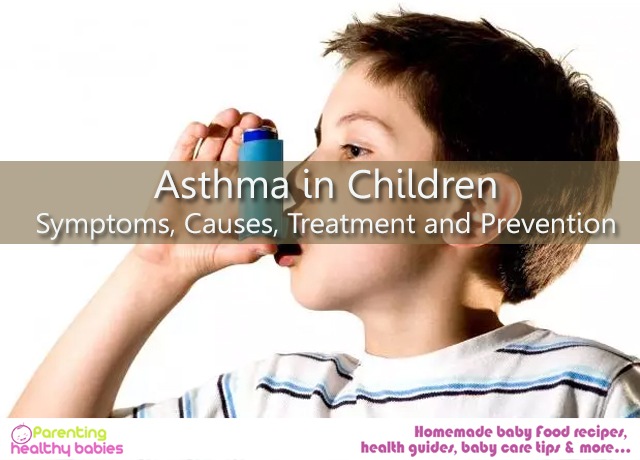Mold and mildew are fungi. The spores, travel through the air. Spores spread in dry, windy weather while others spread with the fog or dew when humidity is high. Inhaling the spores causes allergic reactions in some people. Although dozen molds cause allergic reactions, grow on rotting logs and fallen leaves, in compost piles and on grasses and grains. Outdoor Molds become inactive during the winter. In the spring they grow on plants killed by the cold. Indoors, fungi grow in damp areas. They can often be found in the bathroom, kitchen or basement.
Mold Allergies in Children
Symptoms
Allergic symptoms very similar to the symptoms of other allergies, such as sneezing, itching, runny nose, congestion and dry, scaling skin. They also can reach the lungs and trigger asthma. A substance released by allergy cells in the nose and or lungs causes the symptoms. Sometimes the reaction happens right away.
Rarely, some patients can have a more serious illness called allergic bronchopulmonary aspergillosis. In this condition, there is both an allergic and an inflammatory response to the mold. Symptoms may include severe wheezing, coughing and shortness of breath, much like asthma.
Eating fungi like mushrooms, dried fruit, or foods containing yeast, vinegar or soy sauce, usually don’t cause allergy symptoms of the nose, eyes and lungs. It is more likely that reactions to food fungi are caused by the food’s direct effect on blood vessels. For example, fermented foods (like wine) may naturally contain a substance known as histamine. Histamine is also a chemical your allergy cells release during an allergic reaction. Foods that contain histamines can trigger allergy-like responses when you consume them.
Risk factors
Above can make you more likely to develop a mold allergy or worsen your existing mold allergy symptoms, including:
- Having a family history of allergies. If allergies and asthma run in your family, you’re more likely to develop a mold allergy.
- Earn one’s living in an occupation that exposes you to mold like mold exposure may be high include farming, dairy work, logging, baking, millwork, carpentry, greenhouse work,
winemaking and furniture repair.
- Living in a house with high humidity.
- Mold grow virtually anywhere if the conditions are right — in basements, behind walls in framing, on soap-coated grout and other damp surfaces, in carpet pads, and in the carpet itself.
- Building that’s been exposed to excess moisture include leaky pipes, water seepage during rainstorms and flood damage.
- Living in a house with poor ventilation with tight window and door seals may trap moisture indoors and prevent proper ventilation, creating ideal conditions for mold growth.
Precautions
There is no cure for allergies. Several measures will help:
Reduce Your Exposure to Mold Spores Outside
Limit your outdoor activities when mold counts are high. It lessen the amount of mold spores you inhale and your symptoms.
Dust mask should be when cutting grass, digging around plants, picking up leaves and disturbing other plant materials.
Reduce Your Exposure to Mold Spores Inside
Use central air conditioning with a HEPA filter attachment. It trap mold spores from your entire home. Freestanding air cleaners only filter air in a limited area.
Lower your indoor humidity. No air cleaners will help if excess moisture remains. A hygrometer is a tool used to measure humidity.
Air conditioners and dehumidifiers can also be a source of mold.
Prevent mold and mildew build up inside the home. Pay close attention to mold in bathrooms, basements and laundry areas. Be aggressive about reducing dampness. how to prevent mold and mildew buildup in your home
To Reduce Mold in Your Bathrooms
Use an exhaust fan or open a window in the bathroom during baths and showers. Bathroom carpeting from places where it can get wet should be removed.
Scour sinks and tubs at least monthly. Fungi thrive on soap and other films that coat tiles and grout.
Quickly repair any plumbing leaks.
To Reduce Mold in Your Kitchen
Clean garbage pails frequently.
Clean refrigerator door gaskets and drip pans. Quickly repair any plumbing leaks.
Use an exhaust fan when you are cooking or washing dishes.
To Reduce Mold in Your Laundry Area
Remove clothes from washing machine promptly.
If you have a front-loading washing machine, clean the rubber seal and inside of the door.
Don’t leave wet, damp clothes sitting around.
To Reduce Mold in Your Bedrooms
Throw away or recycle old books, newspapers, clothing or bedding. Check windows for condensation (water droplets or mist).
Improve air flow through your bedroom.
To Reduce Mold in Your Basement
Quickly repair any plumbing leaks.
Promote ground water drainage away from a house.
To Reduce Mold in Your Whole House
Use an electric dehumidifier to remove moisture and keep humidity in your house below 45 percent.
Increase airflow in your home. Open doors between rooms, move furniture away from walls and use fans if needed.
Repair roof leaks and roof gutters. Clean out your gutters to remove leaves and debris. When gutters are full or damaged, it can cause leaking.













